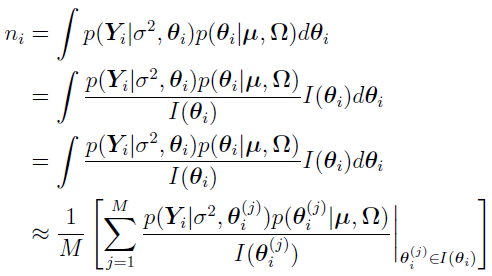How QRPEM Calculates Population Parameters
The current QRPEM code, as of 2023, does not include a mixture model, so the number of mixture K is set to 1. However, the mixture label K can be removed. For example,
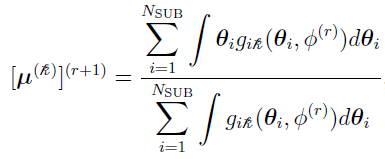
(discussed in “Solutions”) can be written as
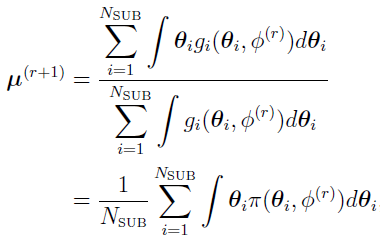
where
is 
 is the joint likelihood:
is the joint likelihood:

 can be defined as the (r +1)th iteration’s Bayes estimates of the mean for subject i,
can be defined as the (r +1)th iteration’s Bayes estimates of the mean for subject i,

and the initial equation becomes

In fact, this equation is Eq.(8) in reference [17], and  replaces xi.
replaces xi.
Similarly,  can be defined as the (r+1)th iteration’s Bayes estimates of the covariance for subject i,
can be defined as the (r+1)th iteration’s Bayes estimates of the covariance for subject i,

and the equation:

(discussed earlier) for K = 1 become

All the calculations which involve the integral over  are performed using the Monte Carlo method with an importance sampling function I(
are performed using the Monte Carlo method with an importance sampling function I( ). In the current NLME engine, by default I(
). In the current NLME engine, by default I( ) is a multivariate normal distribution, whose mean and covariance are
) is a multivariate normal distribution, whose mean and covariance are  and
and  , respectively. (Note that the NLME engine also provides direct sampling, double exponential, multivariate t, mixture-2, and mixture-3. In addition, for the multivariate normal distribution case, the mean and covariance used depends on whether MAP assistance is enabled or not.)
, respectively. (Note that the NLME engine also provides direct sampling, double exponential, multivariate t, mixture-2, and mixture-3. In addition, for the multivariate normal distribution case, the mean and covariance used depends on whether MAP assistance is enabled or not.)
Take the calculation of  as the importance sampling function, for example.
as the importance sampling function, for example.
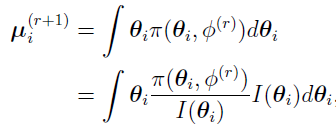
In principle, the role of I( ) is to mimic the shape of
) is to mimic the shape of  , so that the variance of the Monte Carlo estimator of
, so that the variance of the Monte Carlo estimator of  is kept as low as possible [18] [2]. To calculate
is kept as low as possible [18] [2]. To calculate  , its biased estimator [18] [2]
, its biased estimator [18] [2]  is used. The weight
is used. The weight  is defined as
is defined as

Then
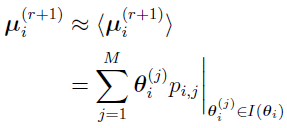
where
 is a normalized weight
is a normalized weight 
(the same as the  in Eq.(3) in reference [17], normalized by
in Eq.(3) in reference [17], normalized by  and
and  ).
).
M is the total number of samples (in QRPEM, usually M = 300).
(j) in  means the jth sample of
means the jth sample of  .
.
All the  are sampled from the importance sampling function I(
are sampled from the importance sampling function I( ).
).
Notes:
When using the biased estimator equation, the normalization factor of I( ) does not matter, since it will be canceled in the numerator and the denominator in this equation.
) does not matter, since it will be canceled in the numerator and the denominator in this equation.
QRPEM does not just ‘randomly’ sample from the importance sampling function I( ). Instead, the samples of
). Instead, the samples of  are ‘quasi-randomly’ sampled by using the so called low discrepancy quasi-random sequence. In particular, QRPEM uses a Sobol sequence. The advantage of using quasi-random samples is that, for purposes of numerical integration, sampling from the parameter space of I(
are ‘quasi-randomly’ sampled by using the so called low discrepancy quasi-random sequence. In particular, QRPEM uses a Sobol sequence. The advantage of using quasi-random samples is that, for purposes of numerical integration, sampling from the parameter space of I( ) is done much more evenly than purely random sampling. As a result, QRPEM usually provides far more accurate integral values for a given sample size. In other words, QRPEM typically gives accurate results using a much smaller Monte Carlo sample size than other MCPEM methods. Therefore, QRPEM is usually much faster than other MCPEM methods, without compromising accuracy.
) is done much more evenly than purely random sampling. As a result, QRPEM usually provides far more accurate integral values for a given sample size. In other words, QRPEM typically gives accurate results using a much smaller Monte Carlo sample size than other MCPEM methods. Therefore, QRPEM is usually much faster than other MCPEM methods, without compromising accuracy.
For the total log likelihood, since there is no Gaussian mixture, ln is
is

where  . The same M quasi-random samples of
. The same M quasi-random samples of  sampled from the importance sampling function I(
sampled from the importance sampling function I( ) using the low-discrepancy Sobol sequences, can be used to evaluate ni as follows,
) using the low-discrepancy Sobol sequences, can be used to evaluate ni as follows,
